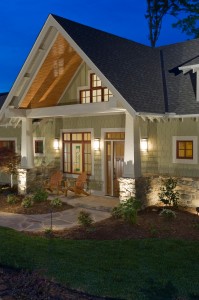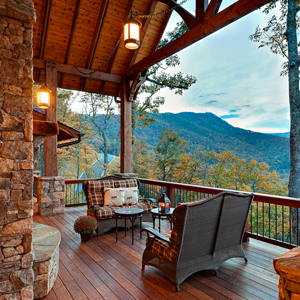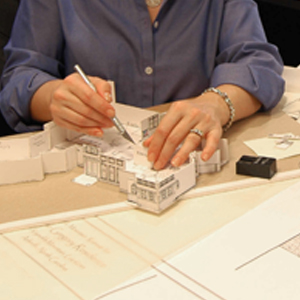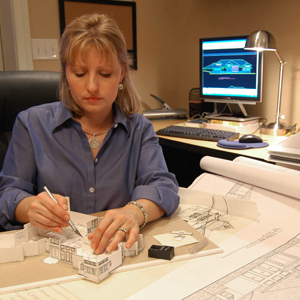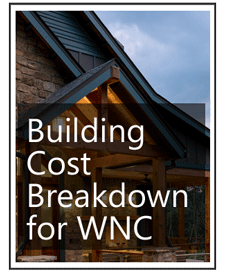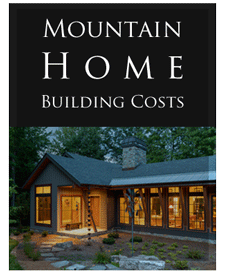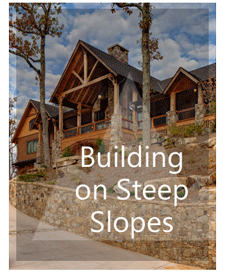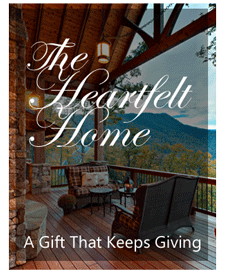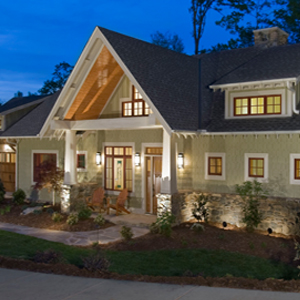
Reasonable Approaches to Sustainable Living
Sustainable living, green building and eco-friendly homes are nothing new. Although rapidly gaining a widespread audience, green living is actually a way of life and can be as simple as changing your eating and recycling habits, or as far-reaching as designing a custom home with environmentally friendly building materials and features.
The benefits to homeowners building green, eco-friendly homes are well-known but worth repeating: lower utility bills, greater comfort, better indoor air quality, tax breaks, and higher resale prices, just to name a few. Green building should not be looked at as yet another home-building fad, but rather a way of making well-informed decisions regarding the ways we think and live. By making smarter decisions we significantly increase our health, wealth and well-being for ourselves and our families.
Green living at its core uses resources more efficiently, eliminates waste and creates healthier living spaces. It goes beyond an energy-saving appliance or a reduced waste home site (although those are great places to begin) and it is about significantly addressing and subsequently changing your lifestyle to live with efficiency in mind.
Building a green home first means understanding the balance involved between homeowner and nature. While benefits for the homeowner are vast, the effects of green building and sustainable living to the environment are equally immeasurable and require a harmonious blend of the two.
A great builder can assist with several materials to improve efficiency, but it is working with a custom home architect that allows the freedom to implement green building design from the very start. Depending on the level at which one wants to add eco-friendly elements into their custom home design, the following should at least be addressed and discussed when building a new green home:
- Ways to design your home with the site orientation in mind
- Ways to save water
- Ways to save energy
- Ways to design a healthy building/structure and air quality
- Ways to reduce waste
One of the simplest ways to add to the energy efficiency of a new home is to consider the site orientation and features during conceptual design. The placement of the home on the property can make a tremendous difference in both the energy efficiency and overall cost of the home itself. For instance, placing many large windows on a west facing exterior results in significant heat gain thru the windows to the inside of the home. During the summer months, this design decision adds up to big dollars on the cooling bill. By simply rotating the home slightly on the property to avoid facing due west or by reducing the number of windows on a west facing elevation, the architect avoids the heat gain, as well as the high energy bill for the homeowner summer after summer.
Saving water obviously benefits the Earth and the homeowner by lowering utility costs. Water conservation can be achieved by incorporating low flow faucets and toilets, but can also be accomplished simply by doing things day to day like turning the water off while brushing one’s teeth. When architects and landscape architects and designers work together, they can help homeowners conserve even more water by designing rainwater catchment systems that capture rain water from the roof to irrigate plant material in the yard. Landscaping with native plants helps make the saved rainwater go even further.
Energy savings are ubiquitous in new home design, from Energy-Star-rated appliances to solar panels and geothermal heat pumps, the sky is the limit for incorporating new technologies. Even basic design considerations can affect energy savings by addressing plans and elevations that optimize passive solar heating and cooling effects.
Designing a healthy home and insuring the air quality is of the highest level can be achieved several ways. Attic spaces should be properly ventilated to eliminate rotting or mold when conditions rise and fall. Properly regulated heat and air conditioning systems are also important, as the size of the system can often cool the air too quickly, creating an unhealthy breathing environment.
Reducing waste when building green is easy to achieve. From recycling the home site materials, to incorporating natural trees, rocks and vegetation into the landscape design, eliminating waste and using recycled materials is one of the easiest green building methods.
Whatever elements you plan to incorporate into a custom home design, keep in mind that designing a green home begins as a concept and ends with a set of drawings that successfully benefits both homeowner and the environment.


